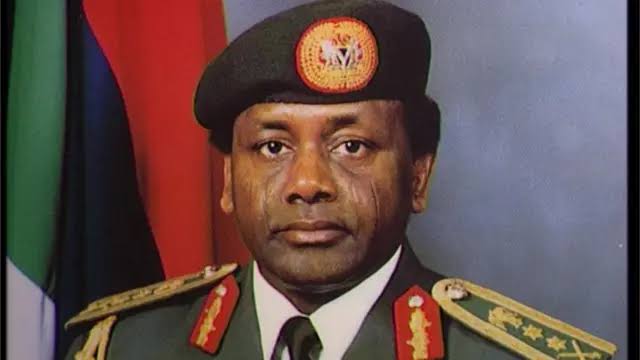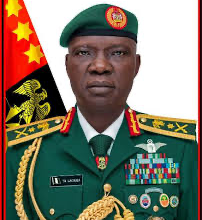Fact-Check: Misleading! $1 Was Not Equal to N22 Throughout Abacha’s Rule

BY: Mustapha Lawal
Claim:
$1 was equal to N22 throughout the regime of General Sani Abacha.
Verdict:
Misleading. While the official exchange rate of $1 to N22 was accurate in 1993 and 1994, available data from the Central Bank of Nigeria (CBN) shows that the naira depreciated significantly from 1995, with $1 reaching over N80 using the Autonomous Foreign Exchange Market (AFEM) rate until the end of Abacha’s rule in 1998.
Full Text:
Amid growing economic concerns in Nigeria, especially with the rising cost of living and naira volatility, several social media users have claimed that during General Sani Abacha’s military regime, the naira’s exchange rate to the US dollar remained stable at N22.

Screenshot of one of such claims ||FCA
General Sani Abacha (1943-1998) was a Nigerian military dictator and statesman who ruled Nigeria from 1993 until his death in 1998. He came to power through a coup, the last successful coup in Nigerian military history. Abacha’s rule was characterized by an iron fist and a blatant disregard for human rights, marked by political assassinations and summary executions of dissidents and opponents.
Abacha’s rule saw Nigeria’s foreign reserves grow from $494 million to $9.6 billion, and external debt fall from $36 billion to $27 billion. Infrastructure improved, with 25-100 km of urban roads built in major cities. Privatisation was halted, and inflation fell from 54% to 8.5%, despite $15/barrel oil prices. GDP growth was higher than 2.2% in 1995, but mainly in the petroleum sector. The unprecedented economic achievements coincided with the rapid expansion of embezzlement, hitherto unseen in the history of corruption in Nigeria, in the alleged saga known as “Abacha loot“
Similar posts of the claim surfaced across platforms like Facebook, X (formerly Twitter), and WhatsApp, often attracting comments or shared alongside criticisms of the current leadership and calls for a return to military-style governance.
Given the virality of the claim and its tendency to spark hatred for a form of government, FactCheckAfrica decided to check if the claim is factual.
Verification
Using the MyAIFactchecker tool, we queried if “$1 was equal to N22 throughout the regime of General Sani Abacha”. Here is the result the tool gave, quoting several sources:
“The claim that $1 was equal to N22 throughout the regime of General Sani Abacha is False. While the official exchange rate was indeed ₦22 to $1 during Abacha’s regime, the exchange rate did fluctuate and was not constant throughout his regime”.
FactCheckAfrica reviewed data from the Central Bank of Nigeria (CBN) and verified the trends in Nigeria’s official and market-based exchange rates during Abacha’s rule, which lasted from November 1993 to June 1998.
In 1993, the official exchange rate was N22.05 to $1. This remained relatively stable in 1994, dropping slightly to N21.89 following the introduction of a fixed exchange rate system aimed at strengthening the naira and consolidating foreign exchange under the control of the CBN.
Quoted on page 8, item number 29 under “Foreign Exchange Rate” subheading of the Nigeria 1994 budget address titled “OUR MISSION’ -delivered by General Sani Abacha, GCON, FSS, DSS, mni, Commander-in-Chief of the Armed Forces of the Federal Republic:
“Also, in the light of our recent experience and in view of the need to create a favourable atmosphere for economic revival, the Government has decided that the exchange rate of the naira be fixed at N22 to S1. The government will actively monitor this decision. Governmenl expects thot Nigerions will contribute towords ensuring the sonctiiy of ihis rote ogoinst oll odds.”
The introduction centralised foreign exchange within the CBN, restricted Bureaux de Change to buying foreign exchange only as agents of the CBN, reaffirmed the illegality of the parallel market, and discontinued the use of open accounts and bills for collection as payment methods.
However, things changed in 1995 when the Autonomous Foreign Exchange Market (AFEM) was introduced as a partial liberalisation of the market. This allowed selected dealers to buy foreign exchange from the CBN at market-determined rates.

Under this system, the naira was trading as high as N88 to $1 while the official rate remained N22. According to Quartz, A (not so) brief history of the fall and fall of the Nigerian naira, many banking fortunes that remain to this day were made then:
- In 1995, the naira depreciated to N82.33/$1 from N21.89 in 1994
- In 1996, it appreciated slightly to N81.48/$1
- In 1997, the rate moved to N81.98/$1
- By 1998, the rate had declined further to N84.84/$1
These figures are CBN AFEM intervention rates, not parallel market values, and reflect official currency policy at the time. At the Bureaux de Change, the situation mirrored the AFEM market:
- N83.69/$1 in 1995
- N83.15/$1 in 1996
- N85/$1 in 1997
- N87.90/$1 in 1998
The disparity between the fixed exchange rate narrative and reality shows that N22 to $1 only existed in the early part of Abacha’s rule and was no longer applicable by 1995 through to his death in 1998.
Conclusion
The claim that $1 was equal to N22 throughout General Sani Abacha’s rule is misleading. General Sani Abacha’s regime maintained a stable official exchange rate despite significant disparities in the black market rate for the Naira. The official exchange rate was N22 in 1993 and 1994; the naira depreciated sharply from 1995, trading consistently above N80 to the dollar through to 1998, according to CBN records under the AFEM regime.




